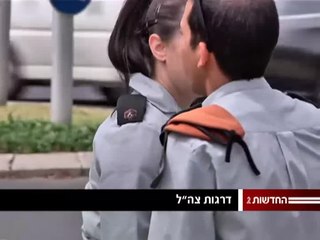Related Research Articles
Warrant officer (WO) is a rank or category of ranks in the armed forces of many countries. Depending on the country, service, or historical context, warrant officers are sometimes classified as the most junior of the commissioned officer ranks, the most senior of the non-commissioned officer (NCO) ranks, or in a separate category of their own. Warrant officer ranks are especially prominent in the militaries of Commonwealth nations and the United States.

Military ranks are a system of hierarchical relationships, within armed forces, police, intelligence agencies or other institutions organized along military lines. The military rank system defines dominance, authority, and responsibility in a military hierarchy. It incorporates the principles of exercising power and authority into the military chain of command—the succession of commanders superior to subordinates through which command is exercised. The military chain of command constructs an important component for organized collective action.

A non-commissioned officer (NCO) is a military officer who does not hold a commission. Non-commissioned officers usually earn their position of authority by promotion through the enlisted ranks. In contrast, commissioned officers usually enter directly from a military academy, officer training corps (OTC) or reserve officer training corps (ROTC), or officer candidate school (OCS) or officer training school (OTS), after receiving a post-secondary degree.
Corporal is a military rank in use by the armed forces of many countries. It is also a police rank in some police services. The rank is usually the lowest ranking non-commissioned officer. In some militaries, the rank of corporal nominally corresponds to commanding a section or squad of soldiers.
A master sergeant is the military rank for a senior non-commissioned officer in the armed forces of some countries.
A petty officer (PO) is a non-commissioned officer in many navies. Often they may be superior to a seaman, and subordinate to more senior non-commissioned officers, such as chief petty officers.
Petty officer second class (PO2) is a rank found in some navies and maritime organizations.
Chief Warrant officer is a senior warrant officer rank, used in many countries.
Other ranks (ORs) in the Royal Marines (RM), the British Army, and the Royal Air Force (RAF), along with the navies, armies, and air forces of many other Commonwealth countries and the Republic of Ireland, are those personnel who are not commissioned officers, but usually include non-commissioned officers (NCOs). In the Royal Navy (RN), these personnel are called 'ratings' rather than 'other ranks'. Non-commissioned member (NCM) is the equivalent term in the Canadian Armed Forces. Colloquially, members of the other ranks are often known as 'rankers'.
Master corporal (MCpl) is a military rank used by a number of countries including the Canadian Armed Forces.
Leading seaman is a junior non-commissioned rank or rate in navies, particularly those of the Commonwealth. When it is used by NATO nations, leading seaman has the rank code of OR-4. It is often equivalent to the army and air force rank of corporal and some navies use corporal rather than leading seaman.
The term used in the Royal Air Force (RAF) to refer to all ranks below commissioned officer level is other ranks (ORs). It includes warrant officers (WOs), non-commissioned officers (NCOs) and airmen.
Before Unification as the Canadian Armed Forces in 1968, the Canadian military had three distinct services: the Royal Canadian Navy, the Royal Canadian Air Force, and the Canadian Army. All three services had a Regular (full-time) component and a reserve (part-time) component. The rank structure for these services were based on the services of the British military, the Royal Navy, the Royal Air Force, and the British Army. The change to a "Canadian" rank structure meant that many of the traditional (British) rank titles and insignia were removed or changed.

The military ranks of Israel are the military insignia used by the Israel Defense Forces (IDF). Because the IDF is an integrated force, ranks are the same in all services The ranks are derived from those in the paramilitary Haganah, which operated during the Mandate period in order to protect the Yishuv.
Master warrant officer (MWO) is a senior military rank in the Bangladesh Armed Forces, the Canadian Forces, Singapore Armed Forces, the South African National Defence Force and the Israel Defense Forces.

A warrant officer (WO) in the British Armed Forces is a member of the highest-ranking group of non-commissioned ranks, holding the King's Warrant, which is signed by the Secretary of State for Defence.

An officer is a person who holds a position of authority as a member of an armed force or uniformed service.
The following table displays the ranks of the Community Cadet Forces, the Combined Cadet Force, the Volunteer Cadet Corps, and the Girls Venture Corps Air Cadets. This table is based on equivalent Rank Structures within the Cadet Forces as detailed in regulations of the SCC, RMC, and the Air Cadets.
The military ranks and insignia of Chile are the military insignia used by the Chilean Armed Forces.
References
- ↑ (QR&O 1.02) Archived 2014-02-21 at the Wayback Machine